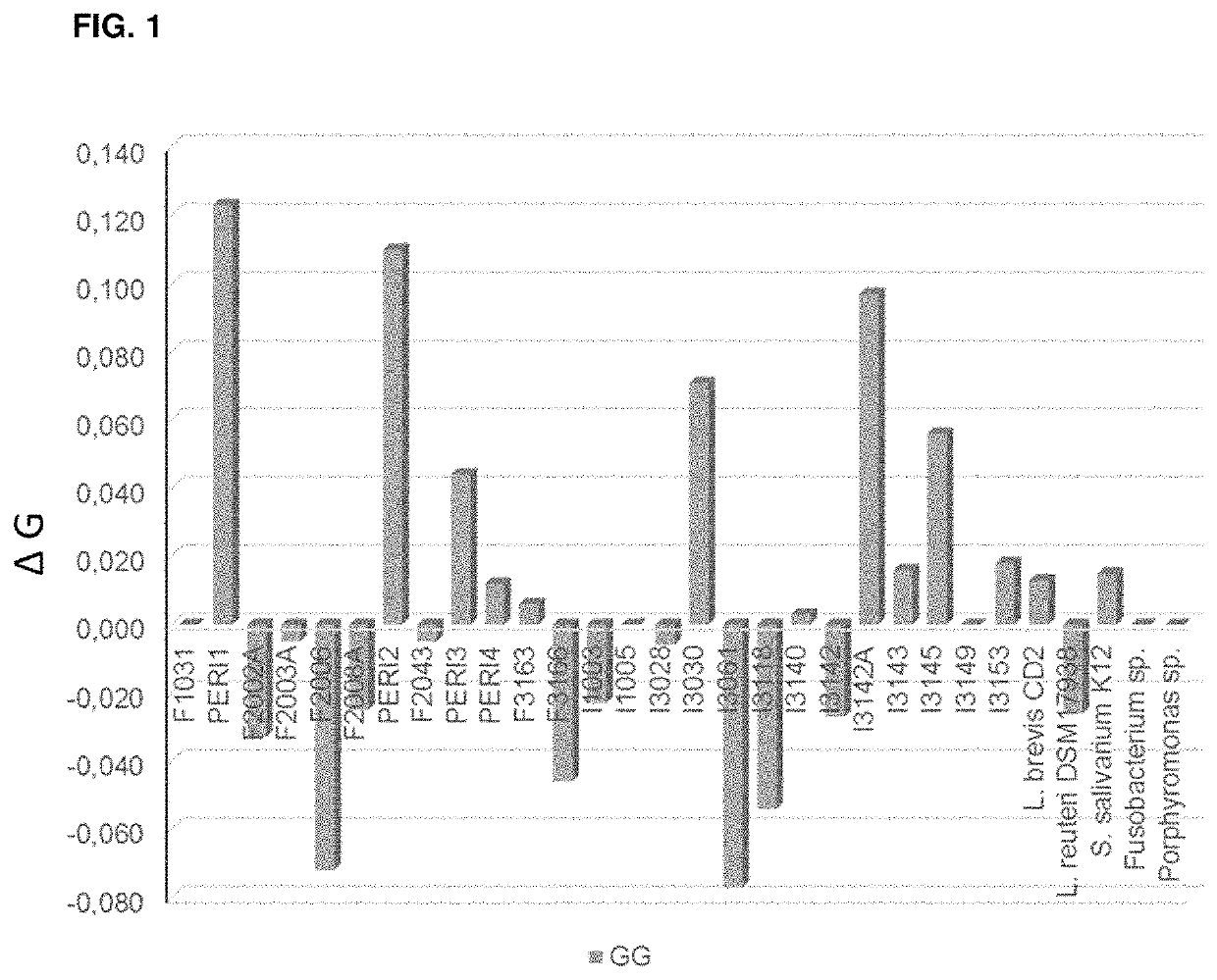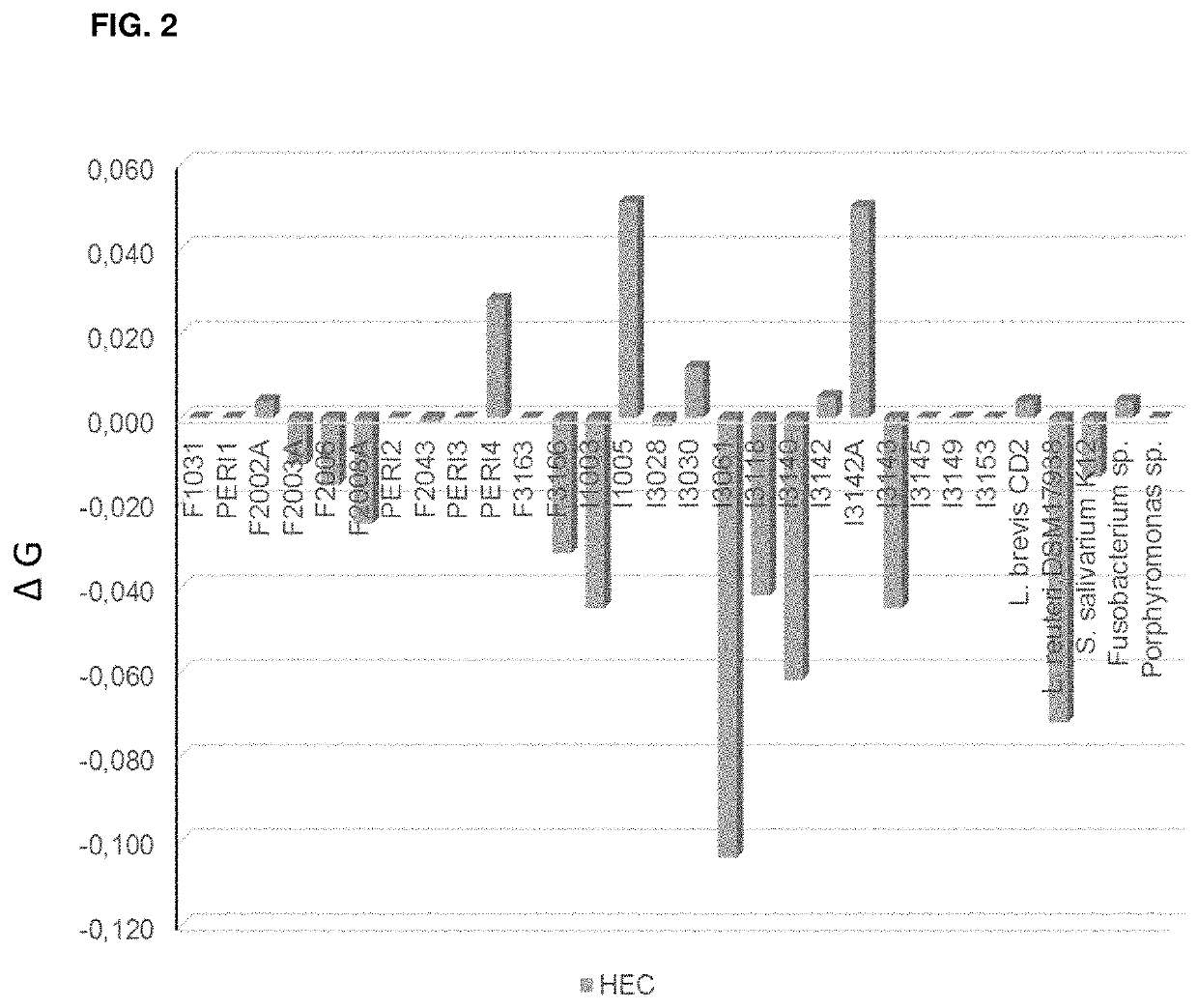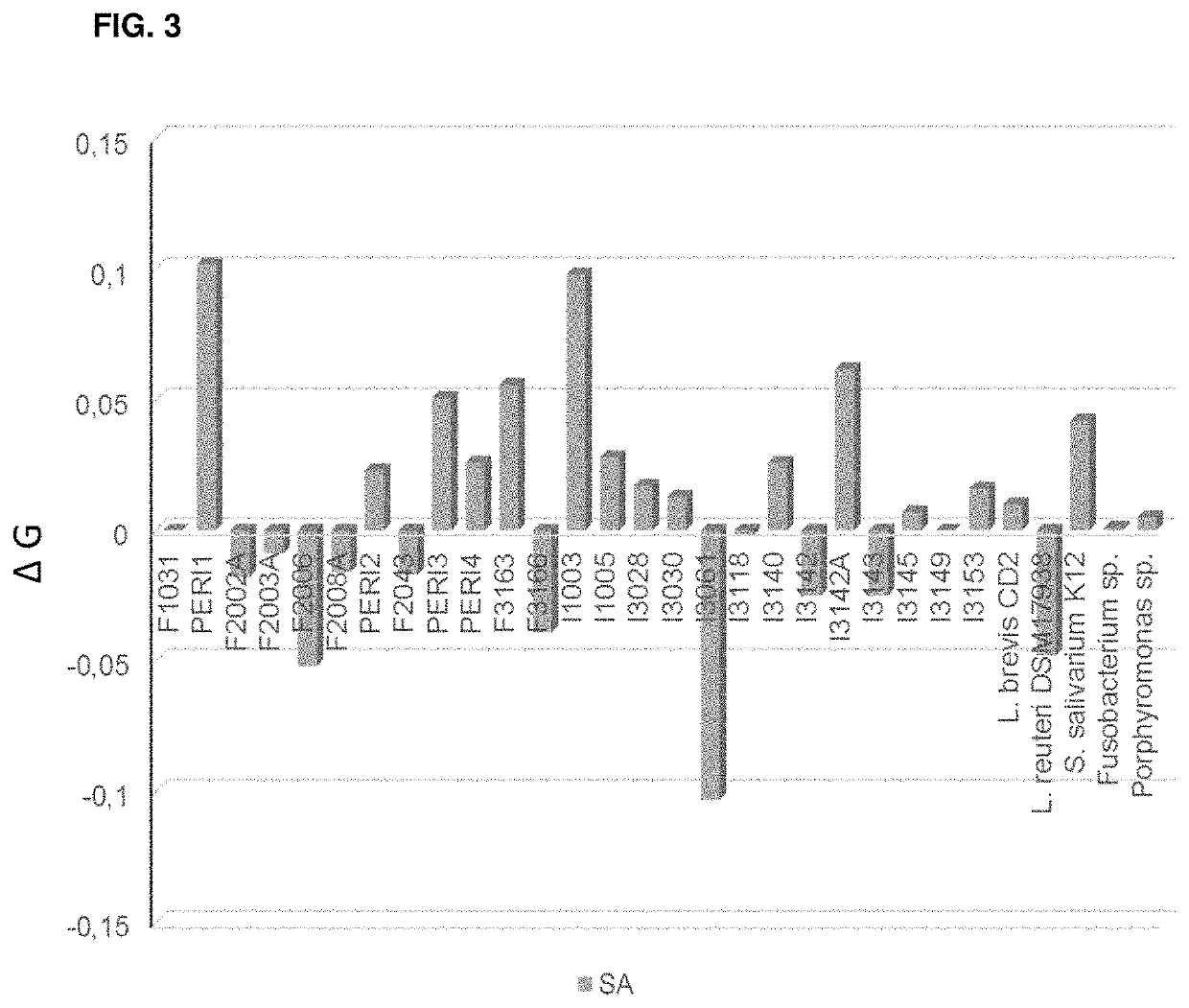Self-film-forming composition for oral care
a self-filming, oral care technology, applied in the field of microbiology, can solve the problems of chlorhexidine side effects well known, discoloration and staining of teeth and other oral surfaces, and continued bone loss
- Summary
- Abstract
- Description
- Claims
- Application Information
AI Technical Summary
Benefits of technology
Problems solved by technology
Method used
Image
Examples
example 1
of the Microorganisms
[0160]Lactic acid bacteria candidates were isolated from fresh stools and oral hyssops from 0-9 year-old children. Samples were dissolved in PBS buffer (pH 7.4), aliquoted and plated on MRS supplemented with various antibiotic combinations. Strains were cultured under microaerophilic conditions (5% CO2) at 37 or 30° C. Incubation time depended on the growth rate, but ran normally from 24 hours to 3 days. Isolation of individual strains proceeded with the same selection media, and then Gram staining was carried out in order to get a first identification. Once grown, isolated strains were stored by freeze-drying in PBS 0.1× with 15% skim milk powder.
example 2
[0161]Identification to species level was performed by sequencing 16S rRNA gene. Briefly, the DNA of the strains was extracted with Chelex® 100 resin from Bio-Rad Laboratories (Barcelona, Spain). Complete sequence of 16S rRNA gene was amplified by polymerase chain reaction (PCR) using the universal primers for eubacteria 27F and 1492R as previously described [Weisburg, W. G. et al. 1991; Muyzer, G. et al. 1998]. The integrity of PCR products was checked in an agarose gel using SYBR green dye (Invitrogen, Life Technologies, Madrid, Spain). PCR products were sequenced using 27F, 357F, 907R and 1492 primers [Weisburg, W. G. et al. supra; Muyzer, G. et al. supra], a v3.1 Cycle Sequencing kit and an 3130 XL Genetic Analyzer (from Applied Biosystems, Life Technologies, Madrid, Spain). The resulting sequences were aligned and compared with those presents in the National Center for Biotechnology Information (NCBI) and RDP (Ribosomal Database Project). The strains were ...
example 3
notyping
[0163]Strain genotyping was performed by random amplified polymorphic DNA (RAPD) for confirming that the four strains of Pediococcus sp. deposited were different between them. RAPD was performed as described by Nigatu et al. 1998. RAPD patterns of the strains are depicted in FIG. 6, demonstrating that the four strains were different.
PUM
 Login to View More
Login to View More Abstract
Description
Claims
Application Information
 Login to View More
Login to View More - R&D
- Intellectual Property
- Life Sciences
- Materials
- Tech Scout
- Unparalleled Data Quality
- Higher Quality Content
- 60% Fewer Hallucinations
Browse by: Latest US Patents, China's latest patents, Technical Efficacy Thesaurus, Application Domain, Technology Topic, Popular Technical Reports.
© 2025 PatSnap. All rights reserved.Legal|Privacy policy|Modern Slavery Act Transparency Statement|Sitemap|About US| Contact US: help@patsnap.com



